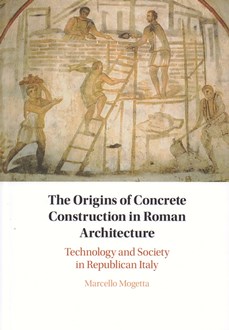The origins of concrete construction in Roman architecture : technology and society in Republican Italy / Marcello Mogetta, University of Missouri, Columbia.
Yer Numarası
B.II/0022
ISBN
9781108845687 (hardback)
9781108964852 (paperback)
9781108990516 (ebook)
9781108964852 (paperback)
9781108990516 (ebook)
Dil Kodu
İngilizce
Kütüphane
Türk Tarih Kurumu Kütüphanesi
Yazar
Basım Bildirimi
First published.
Yayın Bilgisi
Cambridge ; New York : Cambridge University Press, 2021.
Fiziksel Niteleme
xiv, [8], 311 sayfa : resim (kimi renkli), plan, tablo ; 26 cm
Genel Not
Sözlük s. 252-259.
İndeks s. 304-311.
İndeks s. 304-311.
Bibliyografi, vb. Notu
Bibliyografya s. 260-303.
İçindekiler Notu
Introduction -- Deonstructing Roman concrete -- A new date for concrete in Rome -- A view from the suburbium -- Building Samnite Pompeii -- Colonial networks -- Conclusion.
Özet, vb.
“Concrete construction represents Rome's major contribution to the history of ancient architecture and engineering. Scholars have touted the modern character of this man-made material, which gave planners the ability to cast structures wherever they were needed, emphasizing the inextricable link between building medium and building forms. Observation of the durability and longevity of concrete features, and particularly their survival in hostile environments such as seawater, has stimulated the scientific study of the material in order to identify the constituent elements and to describe the mechanical, chemical and physical characteristics for possible reproduction. As a result, the systematic testing of ancient samples has greatly improved our understanding of how Roman builders of the Late Republican and Imperial periods exploited raw materials. Moreover, the approach has shifted to concentrate on the step-by-step examination of the construction process, and standardized procedures have been developed to quantify the costs of construction, thus allowing for a contextualization of the building industry within the broader Roman economy.” -- Yayıncı.


